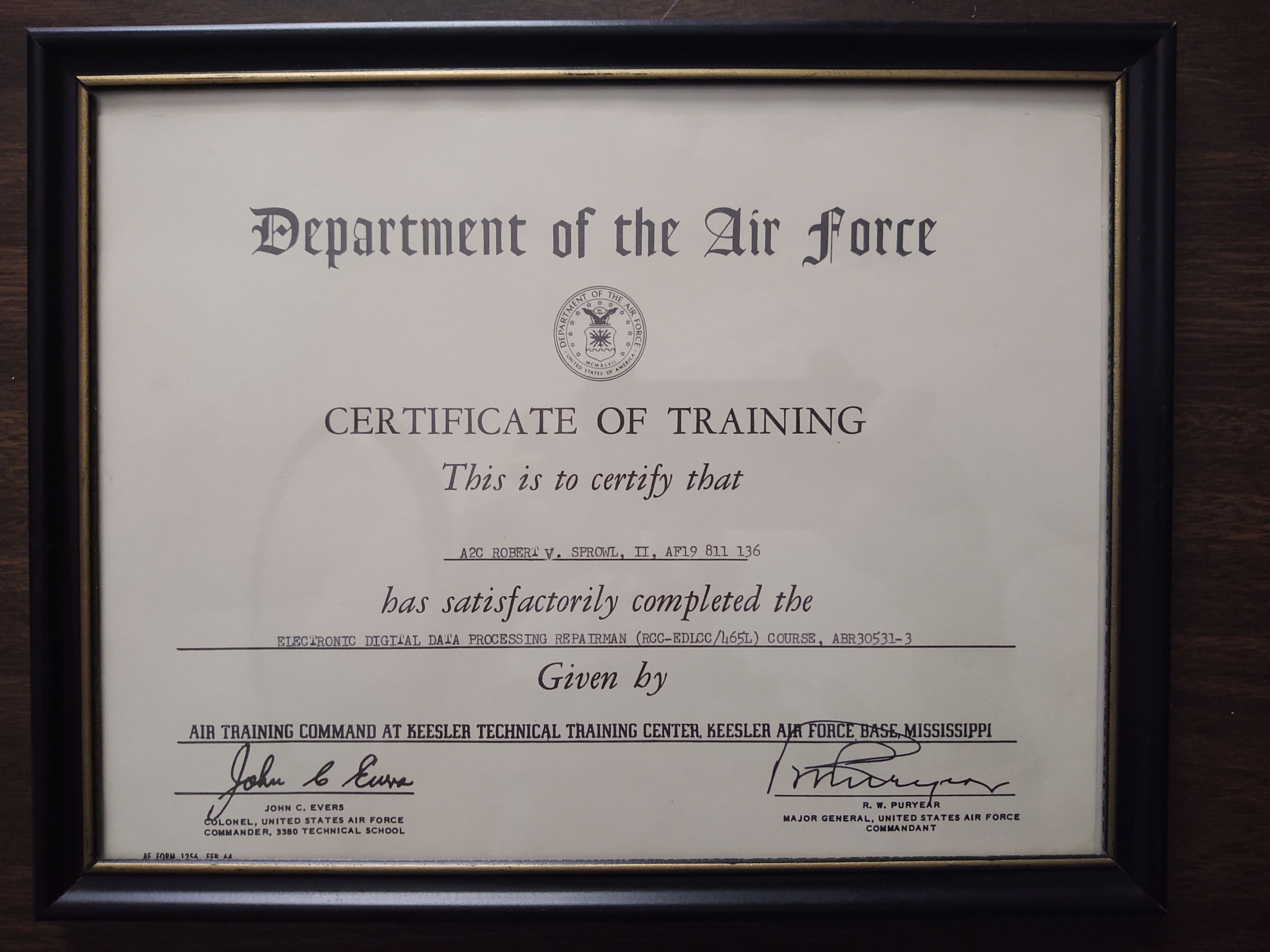
Deanna and I had three children. Lynda and her first husband, Fred McClary, had three children. Our children are living in Alabama - Robert, California - Gregg, Illinois - Cyndi and Allen, and North Carolina – Jan. LeAnn passed away in 2013. Our sixteen grandchildren are scattered across the country living in Alabama - Heather and Cheyenne; California - Cassandra and Kristianna; Florida -Kayla; Illinois - Shasta, Justin, Chase, Kyrstin, Alysia and Petyon; North Carolina – Brad, Cori, Micha, and Lindon; and Wisconsin - Rebecca. Peyton, Gregg’s daughter, has asked me for details of my life and Nick (Kayla’s son) seemed to find the stories I told him about my parents and myself interesting. Since I don’t have daily contact with them, I intend to use this biography to provide accounts about my parent’s families and their raising, my life, and things I learn along the way. I start with things I’ve written previously and add new things as time permits and as I recall them. I have my mother’s scrap books from the 1920s through the 1950s and I’ll copy from them and insert photos of people and things that I hope they will find interesting. I also plan to include things I screwed up and some of the problems I struggled with; I think I’ve had more successes than failures, but I want to make this a complete story.
There is an opening summary, amore detailed biography, a list of where I’ve lived and major jobs held, places I worked, schools I’ve attended, schools where I’ve taught, cars I drove, some thoughts on aging, and a coupleof short stories.
While I was preparing this (Oct 23, 2023) , Greggory committed suicide. I know almost nothing about it; I may add somthing someday.
I was going to post a well written summary of what I’ve been doing but it was 4800 characters, too long. I had to cut it to less than 4000 characters so it is choppy:
I went into the Air Force on August 4, 1964. After Basic training I went to Keesler AFB (Biloxi), MS for training in vacuum tube electronics, married Deanna Miller (Vallejo class of 1964), completed training on transistorized computers, transferred to Vandenberg AFB August 1965. My son Robert was born in January 1967. Assigned to Cam Rahn Bay AB, Viet Nam, Feb. 1968. Promoted to Staff Sergeant in September 1968. My daughter LeAnne was born in July 1968. Assigned to Kirtland AFB (Albuquerque), New Mexico, February 1969.
I applied for, was accepted into the Officer’s Education and Commissioning Program, and transferred to Oklahoma State, Jan. 1971. My son Greggory was born in November 1970. I graduated with a BS in Mathematics Dec. 1972. I become a 2nd Lieutenant in April 1973. August 1973 arrived at Offutt AFB (Omaha), NE - Assigned to the 1st Aerospace Communications Group as a computer programmer. I was also the Group’s Safety Officer and Detachment Commander of 70-man Radio station located 35 miles west of Offutt at Elkhorn. Jan 1976 reassigned to Strategic Air Command Head Quarters as a Computer Maintenance Systems Analyst. Promoted to Captain April 1977. Deanna and I divorced in November 1978.
September 1978 transferred to Scott AFB (St Louis), IL - Air Force Communications Command, Computer Systems Operations Manager. Directed the operation of the Air Force portion of the global message transmission system (AUTODIN). In April 1980 I married Lynda McClary and she brought her three children Cyndi, Jan, and Allen into my life. I earned an M. A. in Management and Human Relations (double major) from Webster University Dec. 1980.
I was assigned to HQ LANDSOUTH (NATO) in Verona, Italy July 1981. I directed nine work centers at three locations operating four communications centers, three telephone systems, and a manual (later) automated message relay. When the computerized message relay was scheduled for installation, there was no budget for staff training so I created/taught computer fundamentals classes. Lynda, her girls and I visited Venice, Rome, Milan, Capri, and other European locations.
We returned to the US in July 1984, assigned to the 33rd Information Systems Group, March AFB (Riverside), CA, where I functioned as the Deputy Chief of Maintenance when the incumbent became the acting Vice Commander; I managed 200 personnel in 14 work centers. We lived in Hemet near my brother Bill. I retired in August 1985. was hired as the MIS Director at San Bernardino Community College District with 17,000 students. We had a large Burroughs mainframe, later a Unisys A5F mainframe with 200 plus remote terminals. I also taught computer science classes at the University of Redlands-August 1987 to May 1994.In late 1994 after Lynda retired from Federal employment, she asked why we were living in California when our grandchildren were on the other side of the Mississippi. Moved to North Carolina in Dec 1995.
Raleigh, NC: June 1996 to November 1997 – Network Manager for Occidental Fire and Casualty Company. Our IBM AS/400 was networked via Novell to three states.
Apex, NC: December 1996 to Nov. 2005 Carolina Center for Clinical Information which monitored Medicaid and Medicare payments for the State. Technical Information Coordinator. Finished a much-delayed project on the original schedule I was given and on my original budget.
Sanford, NC: January 2006 to October 2019 Methodist University, Fayetteville – Jan. 2006 to May 2010 - Adjunct Professor - Business Computing.
Lynda got Alzheimer’s in early 2015, had a stroke and fell and broke her hip in 2018; she passed away in April 2019. . We had 16 grandchildren and 19 great-grandchildren when she passed.
Deatsville, Alabama: October 2019 to now(2023) – Completely retired finally, relocated to be near Robert.
I'll be adding details to my complete biography that follows as time permits. Things added will open and close with the date they added and I'll list those dates here.
I was born in Vallejo, California in August of 1945. My father, Robert, worked as a welder at Mare Island Naval Shipyard, starting in 1940 (before WWII) and retiring from there in 1978. My mother, Mildred, worked as a payroll clerk at Mare Island Naval Shipyard during WWII. My parents were in their mid-thirties when I was born. My brother, William (Bill), was born 21 months later.
My mother was the founding secretary for the East Vallejo Improvement Association which campaigned to get the Vallejo Sanitation and Flood Control District created. (I believe Lake Dalwigk is named for the Founding President of that organization.) After we visited Children’s Fairyland at Lake Merritt my mother decided that Vallejo needed a similar park. She was the driving force that created Vallejo’s Children’s Wonderland on Glenn St. When we were teenagers my brother and I “volunteered” many hours when construction began. She started working at the Vallejo High School Plunge as a Clerk/Matron when I was a student the high school. She retired in the mid ‘70s.
Somewthing I screwed up that turned out alright. We were all required to take a "Guidance Course" in our sophomore year; I'm not sure if it was only college bound students or all students. My instructor was Mr. Barstow, a demanding teacher. I blew off a written assignment and the makeup assignment. What those of us who did that didn't understand (although we'd been told by him) was the full impact of not doing the assignment. Our parents were called in and they were told what we'd done and the assignment was now a full blow, college quality, research paper. We had to go to the library, do research to create forty or more note cards, create a bibliography card for each reference, write a draft paper which he critiqued, revise, resubmit, revise, resubmit and finally finish the paper. Took up all of my spare time for a month. I got an “A” on the paper (and if I hadn’t I been told by my parents, I would be grounded for the entire summer.) Mr. Barstow didn’t just write a few notes about what was wrong or missing from my paper, he explained why it was not right, and what I needed to do to fix it; he also had sample papers for me to read and compare to mine. He spent a lot of time with us on those papers. What I learned by doing that paid off for me many times. My experience from that allowed me to create many formal papers. Several times I wished I could have thanked him.
I attended Vallejo's public schools. I played trumpet and French horn in my junior and senior high schools' bands and orchestras, and the French horn in the local Junior Symphony. My brother and I had several newspaper routes for the San Francisco Examiner, delivering over five hundred papers between us each morning for several years.
Took my first driver’s license test with my god-father's, Neal Langdon, ’58 Edsel; I think he was Bill Nipper’s great uncle. I lettered in Cross-Country Track at Vallejo and Hogan Senior High School and was president of the Chess Club in my senior year. I was an active member of the YMCA; one summer I helped build a new camp in the Sierra Nevada mountains. Although on the college prep track in high school, I took Auto Shop in the Spring of my senior year and represented Hogan in the Chrysler automotive troubleshooting competition.
Most male students in Vallejo high schools took the apprentice aptitude test at Mare Island Shipyard. I qualified for the Tool and Die Maker training program. I didn’t know what a Tool & Die maker did and being a bit arrogant I didn’t ask anyone because I was going to college. Years later when I found out whatr they did, I realized that I am always doing the things that a Tool and Die maker does. I would have liked that career.
Bill had a .22 rifle, but I preferred archery. I had a recurved bow that I shot regularly. I even attempted to make my own arrows but soon discovered that finding truly straight tree branches was very difficult. I also found out that pine was too soft and usually splintered or even shattered on the first shot or two. I now have Bill’s .22 rifle.
We attended Vallejo's First Methodist Church where I earned several consecutive annual awards for perfect attendance. When I was in junior high school, we changed to the First Presbyterian Church. I was curious about other religions and attended the Jewish Synagogue with our next-door neighbor regularly for about two years. During my high school years, we attended the Community Presbyterian Church.
In May of 1964 my father told my brother and I that he was graduating from the Vallejo High School Adult program, and we should attend the ceremony. We both were so wrapped up in our own activities that neither of us was aware that he had been going to school. I was awed as we watched him walk down the aisle in the Vallejo High auditorium in his cap and gown.
The rest of the story: when my father was in Eight Grade in Denver, Colorado he delivered telegrams after school for pocket money. He had a really crummy bicycle. He saved and bought a much nicer one (but not new). The next day when he got home from school, he couldn’t find it; his mother finally told him that his stepfather had sold it. He moved out, quit school and never slept in his mother’s house again. Both he and my mother were very conscious about my and my brother’s grades. They lead us to believe that she had excellent grades and graduated from High School. After she passed, I found her report cards; they were good, however, I also found her GED certificate. Dad was a firm believer in the Unions and belonged to the International Brotherhood of Boilermakers, Iron Ship Builders, Blacksmiths, Forgers and Helpers (IBB) for 35 years and the International Brotherhood of Electrical Workers (IBEW) 25 years. He was also a Special Officer in the Vallejo Police Department starting in 1953 and a Special Deputy for the Solano County Sheriff (1954). He worked many of the Junior and High school events including the Friday night dances so if we did not actually go or left early, he knew.Although I had earned a full scholarship to any California State University because my high SAT total of 1227, my parents felt I was not mature enough to move out on my own and so I attended Vallejo Junior College for one year. (They were probably right; the two schools I was considering were San Francisco State and the University of California at Berkeley, and I had gone to either I would have been much too involved with drugs.) My grade point average was 0.67 on a four-point scale the first semester. My second semester was much better; I raised my first-year average to 1.65. With poor grades due to my several part time jobs, which were necessary to support my interest in drag racing, I joined the Air Force on August 4,1964. My long-term plan was serve two years of a four year enlistment then apply for the Air Force academy. With my SAT test scores and in the Air Force aptitude tests where I scored 90 out of a possible 95 in electronics, the other three were 95s which was the highest score you could earn I felt I had a good chance of getting my application approved.
When I got to the induction center in Oakland, I was told that my birth certificate read Robert Vern Sprowl Junior II. I explained that my parents had a son they named Robert Vern Sprowl Jr. born in Denver, Colorado in the 1930 but this child lived less than 8 hours. The Air Force insisted that I could not be "Junior" from the way my birth certificate read and “suggested” that I become "The Second" (II); reluctantly I agreed. I completed basic training at Lackland AB in San Antonio, Texas and was sent to Kessler AFB, Mississippi for an eight-month course on electronics and computers.
Before you started classes at Keesler, everyone was assigned to two weeks of KP (Kitchen Police) in one of the Dining Halls. You also were assigned weekend KP on a rotating schedule. On the second or third weekend of KP, the head cook who had overheard me talking about cars and asked if I would rather work on cars or pull KP. Oh, throw me in the briar patch! He arranged for me to go to the Base Auto Hobby Shop and do a minor tune-up under the watchful eye of a mechanic assigned to the Hobby Shop. After that every time I was on KP, I told in him advance and he arranged for me to go to the Hobby Shop to work on a car. I’d get $2-$5 (Minimum wage at that time was $0.65 an hour) and a takeout lunch from a local hamburger place. Airman who did not want to pull week KP could pay someone to do it for them, so I got $3 to $5 dollars that way also. I did minor tune-ups, brake jobs, and replaced starters and generators, etc.
In late November several of us were moved into the transistorized computer track which added three weeks of fundamentals and a different equipment track adding an additional 4 weeks (and another week of KP). Between the end of fundamentals and the equipment track at the end of January I was allowed to take two weeks of leave and married Deanna Miller (Vallejo High Class of ‘64), my high school girlfriend. After I got married, I moved out of the barracks, so I didn’t have to do weekend KP, but I still did it for the extra money. (I have no idea what the Head Cook got but he was not happy to see me graduate.)

My parents drove Deanna to Biloxi in the Spring in my car. I completed school in the last week of July, and we drove home to Vallejo for a two week vacation before I reported to Vandenburg AFB, CA. I was trained on the Remote Communications Central, part of the SAC Automated Command Control System (SACCS) which networked of all the SAC base together via central computers at Offutt AFB (Omaha, NE), March AFB Riverside, CA, Westover AFB, Massachusetts and Barksdale AFB, Louisiana. I was one of twelve repairmen.
Our system, a Remote Communication Central (RCC), consisted two parallel racks of equipment 7 feet high and 15 feet long. The racks had drawers full of printed circuit boards covered with transistorized circuits. Something would fail and we had to swap it out with a spare and then fit it immediately – before the next failure. We were not trained on maintaining the IBM Selectric Typewriter which was used as an input/output device in the Command Post. Repair procedures were in a manual. There was contract with IBM but the procedures to get their technicians into the Command Post were close to ridiculous so we did most of the maintenance on the Selectrics. At Vandenberg (as at all missile bases) the Command Post computers were connected to the missile launch control facilities where we also had equipment including a printer.
We rented an apartment, and later bought a trailer and lived on base. Deanna was a keypunch operator and got a job in the base keypunch center where she occasionally would key in a work order I had completed. Our first son, Robert Dean, was born in January 1967. I took several transferable general education (World History, U.S. History, and Government) classes at Allen Hancock Community College. Using the Auto Hobby Shop, I rebuilt the '50 Ford's engine in the Vandenberg Auto Hobby shop; it was my first complete engine rebuild.
I completed a four-month advanced computer training program with UNIVAC in Ilion, New York during the summer of 1967. I then was assigned to Cam Rahn Bay AB, Viet Nam arriving during Tet in February of 1968. On my third night in Viet Nam, the base had its first ever attack by mortars and rockets. I maintained the Base Supply Computer System (dual UNIVAC 1050-IIs) with 32 remote teletype input/output devices in the offices and warehouses. Our manning document showed five technicians as the minimum, but we never had more than three. The base had a wing of F-4s and several squadrons of transportation aircraft. We were assigned to the 1881st Communication Squadron wiht diuty at the Base Supply Squadron. My supervisor was a functioning alcoholic. (My supervisor rotated back to the US about the first of June, but his replacement was also an alcoholic.) There never seemed to be any time off. Somebody had to be in the shop 24 hours a day, seven days a week. If one of the nine remote teletypes that were not in the immediate area had a problem, we still had to have somebody in the shop. If it was meal time we still had to have somebody in the shop. The only transportation were your feet.
The typical day was get up, get to the mess hall early so you could relieve the guy that had been on duty all night and he could get to the mess hall before it closed. We had dual systems so preventive maintenance was scheduled on one system near the end of the night shift after the daily reports had been run for the day before and on the other first thing in the morning. After preventive maintenance the system became the main one and the other could be serviced. When the supervisor arrived from the staff meetings he would help with the preventive maintenance and you could work on the teletypes. The teletypes were a real problem. Most of them were not in air- conditioned rooms and they got full of sand and overheated. Our training did not include anything on the teltypes. We were lucky that the Communications Squadron we were assigned to had a big tel type shop and they were able to train one us (me) and I trained the other two. If one of the remote teletypes was down, you had to wait until either the Comm Squadron or the Supply Squadron could get you a truck, so you usually took a spare and if the problem was not minor swapped it bad unit out. On Saturday he supervisor did the day shift and I came in a worked the night shift. The night shift guy came on as my relief and the Supervisor got the day off. I would then work a week of night shifts. So we got an extra 12 hours off every week end.
I only got off the Cam Rahn peninsula on one occasion when I got a three-day pass to Nah Trang, a small town about 40 miles north of Cam Rahn Bay. I took the usual USO tour of this old resort city which with its mix of oriental and European cultures (mostly French) it was very interesting. My daughter, LeAnn Marie, was born in July 1968.
I was promoted to Staff Sergeant (E-5) on September 1, 1968, and was appointed Barracks Chief the same day. I been complaining to the First Sergeant about the lousy job the previous Barracks Chief had been doing; now it was my turn. Because I was a Barracks Chief, I had to be available at the barracks which meant that my supervisor had to work a twelve-hour day at the shop, every day. He was not happy but he wasn’t really mad at me – “stuff happens”. We got an additional man, TSgt Jack VanDongen, in November who out ranked the supervisor. The work week became more reasonable. The base was attacked with mortars and rockets regularly while I was there. The last time was three days before I left, so they shot at me coming and going.
When my tour in Viet Nam was completed in February of 1969, I was assigned to Kirkland AFB, NM. I reenlisted while in Viet Nam and used the money to pay cash for a ’69 Ford Galaxy with a 429 and the trailer towing package. Several months later, I bought a ’66 Galaxie with a 428 and 4 speed which I drag raced. I sold the ’50 Ford to upgrade the ’66 engine to the Police Interceptor version which had the 427 cam, and added Hooker headers, line lock, and Firestone wrinkle wall cheater slicks. In the Winter of ’69-’70 I blue printed the engine. I got it to run within a half second of the national record for its class – not bad for a car I drove to work every day.
I was required to live on base because I was on call - 24 hours a day, every other week. The manning document showed a three-technician minimum, but we never had more than two. Every other week each of us was on call with a 15 minute resonse time. I continued my college studying at the University of Albuquerque. My Supervisor was a cross-trainee and depended on me to train him. I applied for and was accepted by the Airman's Education and Commissioning Program.
I attended Oklahoma State University in Stillwater where I earned a B.S. in Mathematics in December 1972. The University did not allow minors at that time, but I had enough hours to earn two - Computer Programming and Mechanical Power Technology. I was also a student member of the Society of Automotive Engineers. Our youngest son, Greggory William, was born in November 1971.
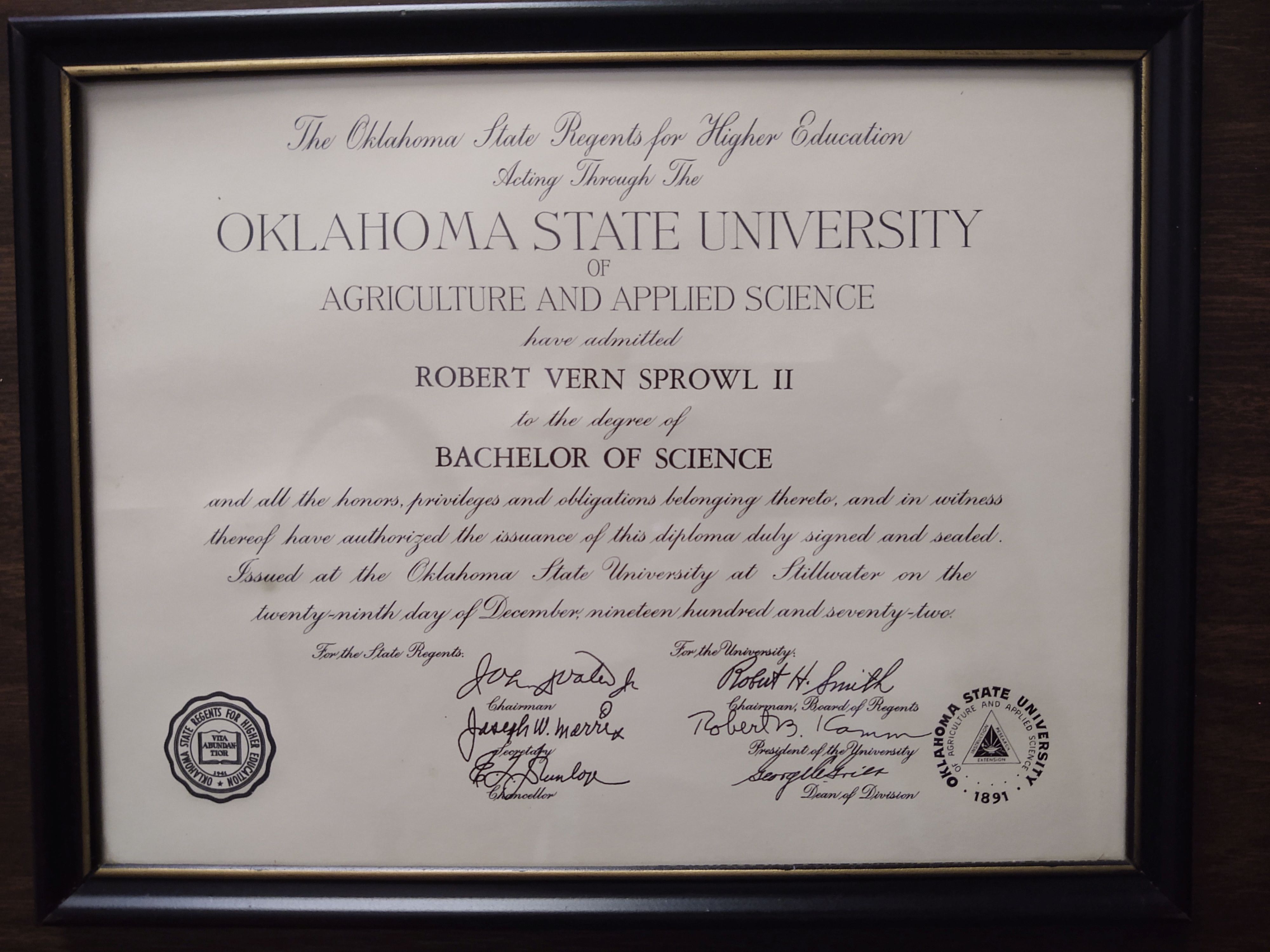
I graduated from Officer’s Training School on April 18, 1973. After commissioning I attended the 31-week Communications Officer Course at Keesler which I completed in 15 weeks as an honor graduate. The course a been reduced from 51 weeks to 31 weeks in January, no one had completed either version of the course in less than half the scheduled time and been an Honor Graduate. This resulted in a congratulatory letter from General commanding the school to the Colonel at my next assignment. I didn’t realize the impact of this letter until much later. I was given “challenging” tasks in my next three assignments.
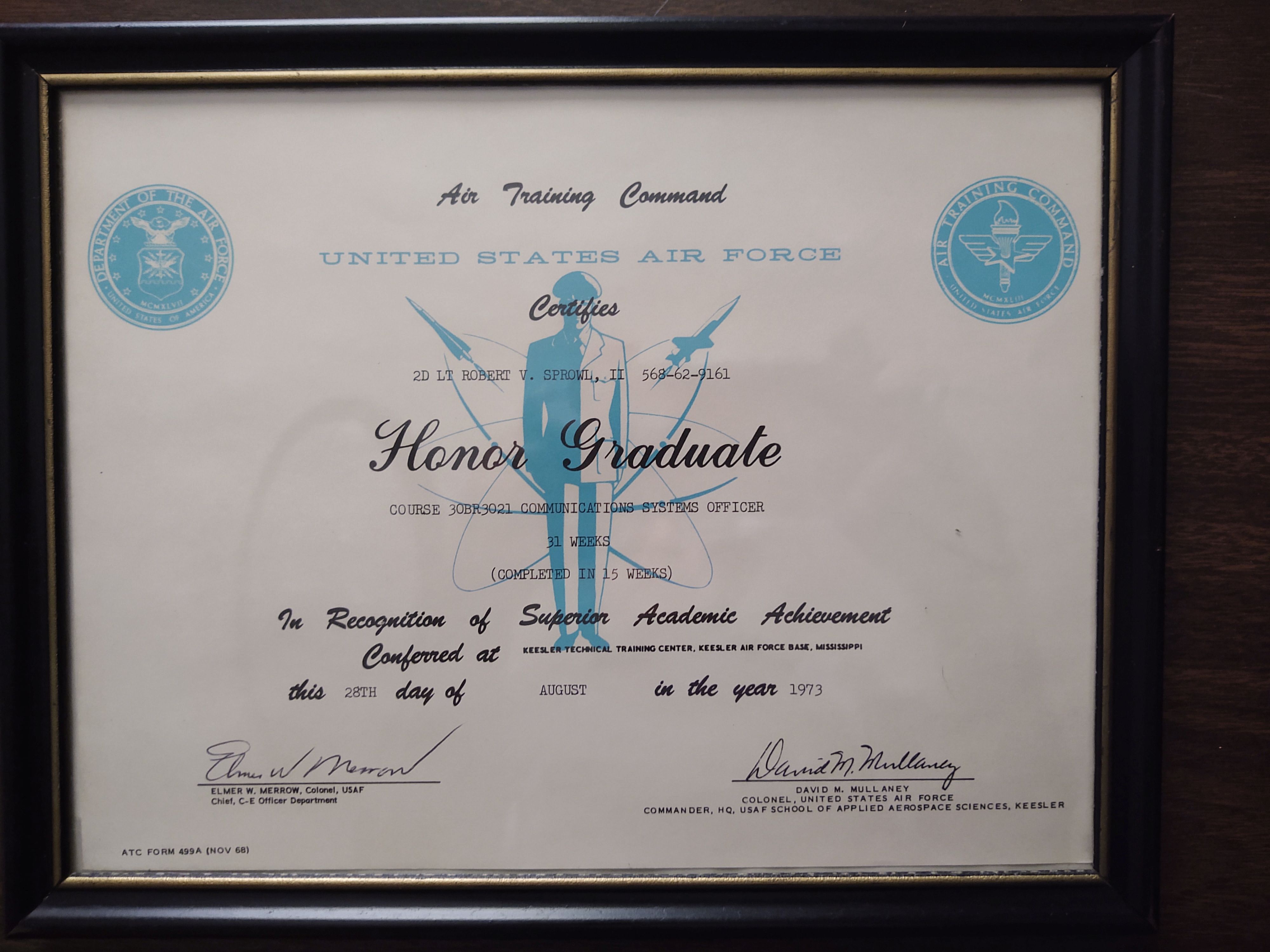
I was assigned to the 1st Aerospace Communications Group which supported SAC HQ at Offutt AFB, Nebraska near Omaha. We brought our first house, a three-bedroom, two bath raised ranch. I became a main frame assembly language programmer on the system I maintained at Vandenberg and was responsible for the interface between the Alert Transmit Console and the remainder of the SAC Automatic Command Control System. (This console is the one featured in movies that requires two people to turn keys simultaneously in order to notify the SAC units of a war time alert.) I was given the additional duty of Safety Officer for the Group's 1100+ personnel with a Staff Sergeant assistant. The Group earned the National Safety Council Award of Merit for its significantly improved record during my tenure. I was elected as the Vice President of the Junior Officer's Council (JOC) which won the SAC outstanding JOC of the Year award for 1974. While I held those jobs, I was as the acting Detachment Commander for the radio ground station that supported the SAC Flying Command Post while the assigned Commander was not available for the last eight months of 1975; my request to transfer to SAC HQ was granted at the end of 1975.
As one of several Computer System Analysts on the SAC staff, I coordinated logistics, staffing and system upgrades to Command Control Communications Systems. I isolated the cause of a three-year-old, system-wide hardware problem then conceived and guided to completion the $1.1 million solution on schedule. I also restructured a hardware test equipment program on another (Classified) system providing the full testing capability two years ahead of schedule, while saving $900,000. During a major headquarters reorganization, I authored security regulations for my department in a new division; because of their completeness and brevity the whole division adopted these. My wife and I separated in 1978 and divorced within a year.
I was transferred to HQ Air Force Communications Command, Scott AFB, Illinois (30 miles east of St. Louis Missouri), in August 1978. As a Computer Systems Operations Manager, I directed the operation of the Air Force portion of the global message transmission system (AUTODIN) with 220 operators and 26 programmers in eight locations. My first big success was having the operators recognized as computer operators by the Office of Personnel Management, which opened the door to many computer jobs for them and eliminated the threat of a strike. I made two trips to the Philippines to coordinate closing of the Clark AFB AUTODIN message switching center. When my supervisor was selected to head the Readiness program in early 1980, he asked me to join him as a Contingency Plans Manager. I formulated and coordinated policy, wrote the Command’s regulation (signed by the Commanding General) and developed implementing guidance for the worldwide contingency use of the command's 48,000 people.
I met Lynda McClary (nee Brightwell) while stationed at Scott AFB. We were married in April 1980, bringing her children, Cyndi, Jan and Allen into my life.
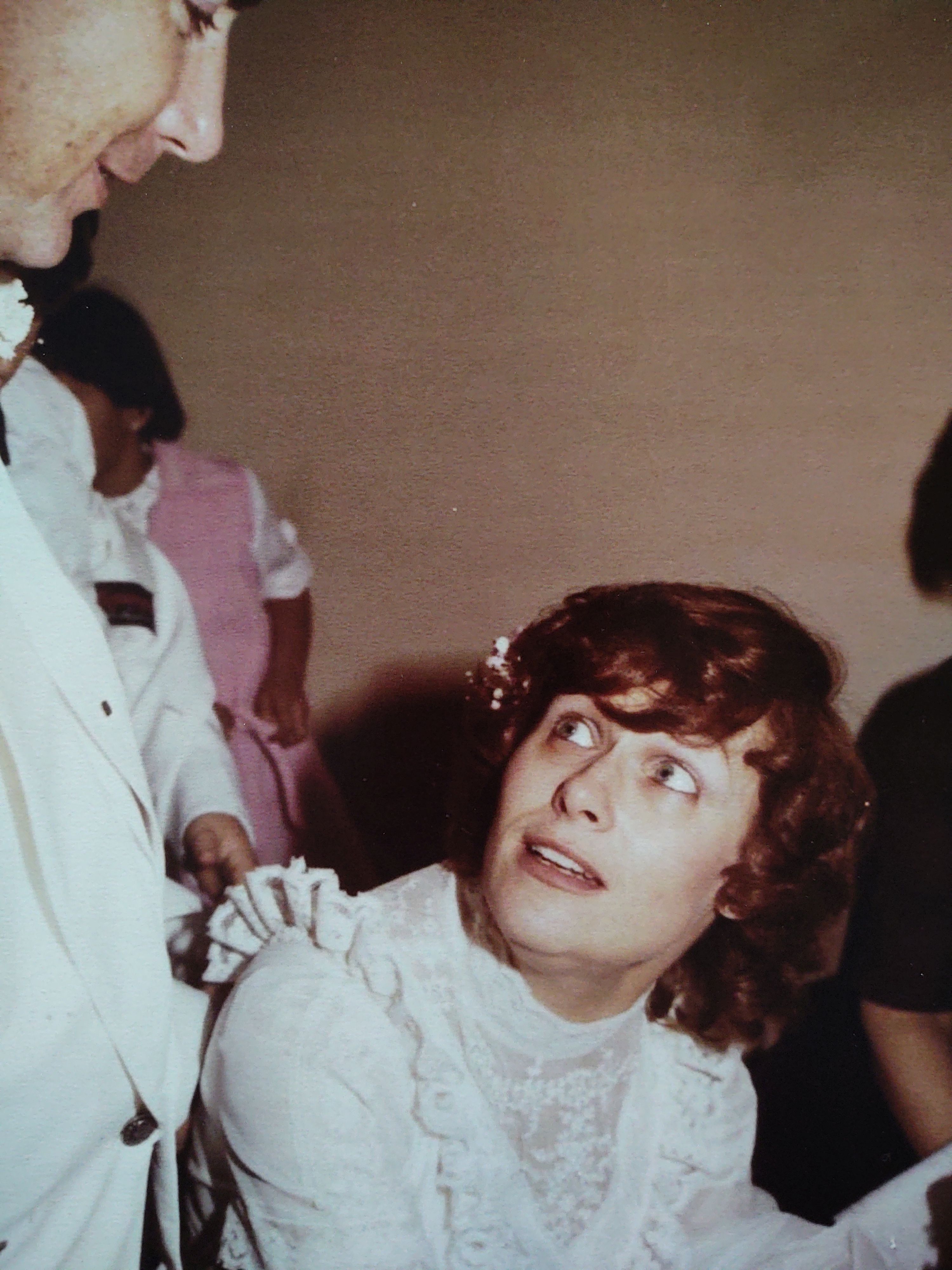
In January of 1979 I entered the master’s degree program at Webster University, St. Louis, Missouri, graduating in December of 1980 with an M.A. in Management and Human Relations (double major) and earning a 3.75 grade point average .
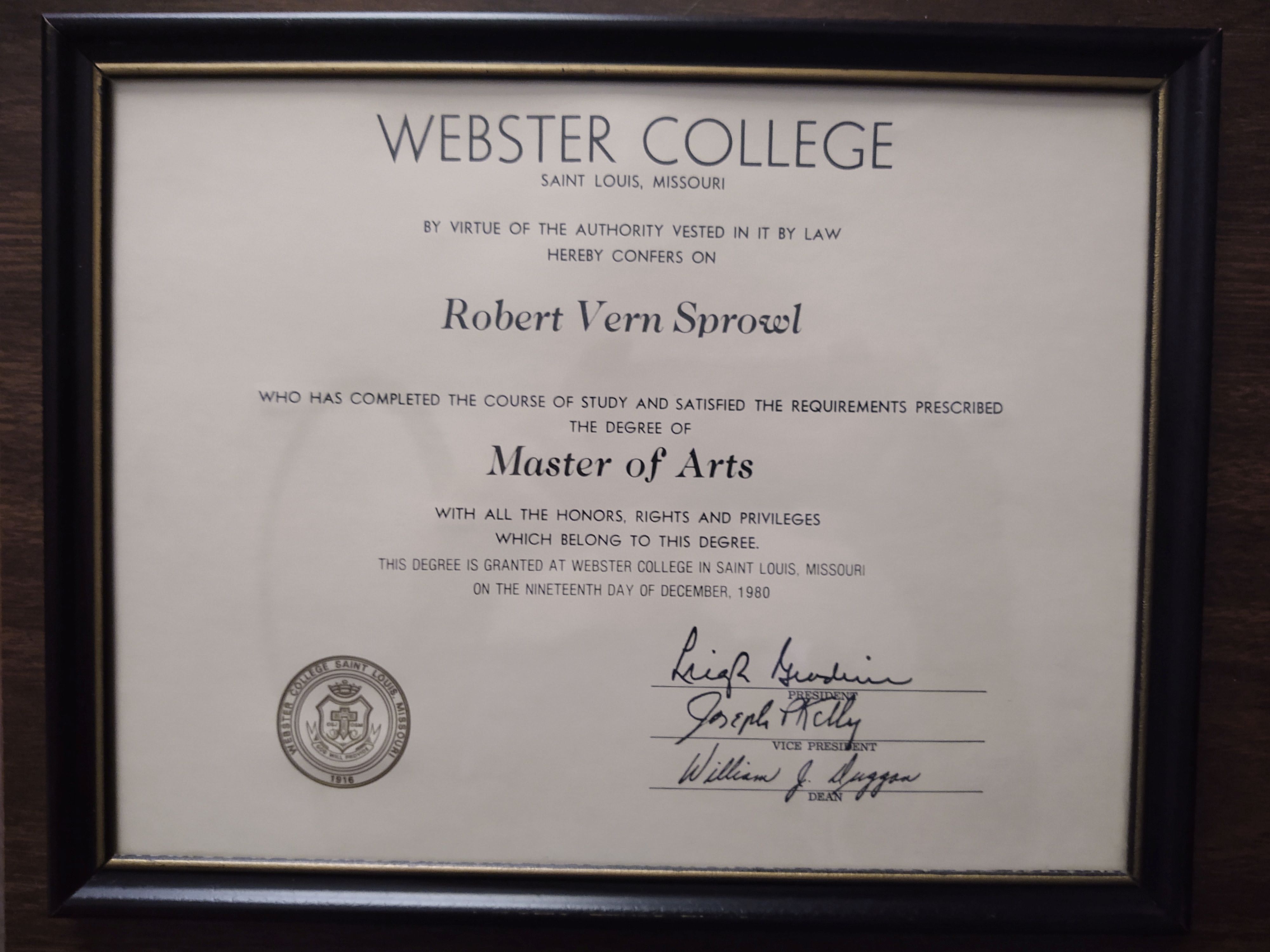
In the summer of 1984, I was transferred to HQ LANDSOUTH (NATO), Verona, Italy where I became the Plans and Operations Director for the Joint Signal Support Group. This organization of 150 personnel was comprised of US Army, Navy and Air Force and Italian Army and Air Force personnel with 80% Italians, most who spoke little English. I directed nine work centers at three locations operating four communications centers, three telephone systems, and a manual (later) automated message relay. I also created and taught computer fundamentals classes for the LANDSOUTH organization because, while, the computerized communications system was scheduled for installation there was no budget for formal training. When the first computerized message switching systems were installed my staff validated cut over plans, worked the bugs out during contractor installation, rewrote and implemented training plans, and operated the computer system after the contractor departed.
Lynda and I visited Rome, Naples, Capri, Florence, Pisa, Milan, and many other northern Italy locations. Venice was a day trip and we toured and shopped there many times. We also visited southern Germany several times, touring Ludwig's castles and the other tourist sites. Our trip to London was with a tour Italian group from LANDSOUTH so the guide spoke Italian; it made the tour especially interesting. Lynda also visited Moscow and Paris.
Returning to the Unites States I was assigned to the 33rd Information Systems Group, March AFB, CA, where I functioned as the Deputy Chief of Maintenance (Director of Technical Services). I managed 200 personnel in 14 work centers and was responsible for the performance of all computer systems, telephone systems, air traffic control systems, radio networks, and satellite ground stations at March AFB. I got my first taste of personal computing in the workplace by implementing the use of desk top computers and reducing data processing service requests by 60 percent in four months. I functioned as the HQ Section Commander (Personnel Manager) for the entire organization for 60 days. I retired in August of 1985.
I taught computer science classes for Central Taxes College while I was in Italy and discovered that I really enjoyed it. When I retired for the Air Force in August of 1985, and was hired as the MIS Director at San Bernardino Community College District which had 17,000 students. There I managed the Burroughs (later Unisys) mainframe administrative computer system with 120 remote devices and the Office Automation System for the two colleges and the district office, directing a staff of 11.
In August of 1989 I became the Director of Operations for the National Technical School's Home Study Division in Los Angeles. My responsibilities included data processing, material control, document control, shipping, receiving, safety, security, facilities, and support to six regional offices. I controlled more than $2,500,000 in annual PC hardware and software purchases, directed a warehouse operation with an $850,000 inventory and managed a staff of 22. I got hands-on experience with Business BASIC on the Point Four computer system and worked with an IBM System 36 for the first time. When the parent company filed for bankruptcy on a Friday morning just after a contractor started the replacement of their very old (late 1940’s) telephone system with a Mitel digital telephone system, the contractor walked off the job. I finished the telephone installation over the weekend by myself.
I continued teaching at the college level at San Bernardino Community College and as a Whitehead Center adjunct faculty member at the University of Redlands, 1987 to 1995 where I taught business management and information systems courses.
In the spring of 1990, I interviewed for a consulting contract. When I came in the next day to sign the contract, I was offered the MIS Manager’s position with Jensen Industries, the West Coast Division of Broan, a subsidiary of Nortek Industries. Jensen's major product lines were bathroom and kitchen fixtures and RV parts. Responsibilities included an IBM System 36 with 60 remote workstations, a Novell LAN, telephone services and facsimile systems. I Initiated computer system security procedures, established formal operating procedures and began a training program for the workstation operators. I also implemented voice mail using savings found by removing 30 unused Centrex lines and restored acceptable system performance by reorganizing disk storage and realigning workstations and data lines. Jensen ran two-ten hour shifts and were in the process of converting to three eight-hour shifts when the Kuwait War started. The war shut down the RV market and the plant went to a single eight-hour shift in one week; 60% of the employees were laid off including my supervisor, the company controller and me.
Commuting to LA was not fun so I focused on promoting my part time computer consulting business - Desk Top Computing & Communications - to full time. I built, installed, and maintained desk top systems for many businesses in the San Jacinto Valley. I also wrote programs using Paradox and Paradox for Windows for the Riverside County Sheriff and an insurance underwriter.
The local Soboba Indian Reservation was developing a southern campus for D-Q University (D-Q University was founded by those Indian's which occupied Alcatraz Island during the late 1970's.) I was hired on a part-time basis to develop a Computer Science curriculum. I found this employment to be very rewarding in a number of ways. It left enough time to enjoy life. I found a great deal of satisfaction in helping those who had previously made poor life decisions and were trying to improve themselves. Several of the students were reformed drug addicts who after completing the program found regular employment and became successful. I also found the Indians to be an interesting people with many useful perspectives on life. The science instructor was an astronomer that had worked on the Voyager space probe that flew by Jupiter and Saturn and I took his astronomy class.
In January 1996 we moved to North Carolina because we wanted to be closer to our grandchildren who were in North Carolina, Alabama, Pennsylvania and Illinois. We both worked in the Raleigh metropolitan area. I was with Occidental Fire and Casualty Company, Medical Review of North Carolina, and as an independent IT consultant. Lynda was the secretary for the Dental Program Fayetteville Technical College and later an Engineer Aid at Underwriter's laboratory in Research Triangle Park; this job had two steps - she completed the 5-credit hour AC/DC circuits course at Durham Technical College to qualify for the top step.
While taking some graduate IT courses at NC State I was an athletic program tutor. Among my students was Philip Rivers who later was the quarterback for the San Deigo Changers. I was also an adjunct professor at Methodist University in Fayetteville. I started in the night school and was invited to teach four day-time sections each semester.
I tried to retire several times – in 1999, 2005, 2010 and 2013. Each time I quickly found I was bored, so bored that in 2013 I took a job as a go-fer (courier) for a construction company (working with my neighbor). I quickly became certified to operate a backhoe, construction forklift and street sweeper. Wage went from $8.75 an hour to $21.50 in six months. I quit when they wanted me to push a shovel on a hot June 2014 afternoon when the was nothing else for me to do – I was 68, too old to push a shovel for pay. Added a two-car garage and two stall shop on my North Carolina house.
Lynda was diagnosed with Alzheimer’s in May of 2015. In 2017 she had a stroke; a few months later she fell and broke her hip. She passed away on April 21, 2019.
I relocated to Deatsville, AL in late 2019, five miles from my son Robert. Robert has four children, two living nearby (Heather and Cheyenne), Kayla in Florida and Rebecka in Wisconsin. Robert’s stepchildren from his second marriage are in North Carolina (Lindon), California (Cassandra) and England (Kristianna). Lindon and Kristianna lived with Lynda and I in North Carolina.
LeAnn passed away in 2014, she was one of the Camp Lejeune environmental losses.
Gregg is in California and has a daughter, Peyton, who lives in Illinois. Lynda’s children are Cyndi, Jan and Allen with eight grand-children Kyrstin, Alysia, Brad, Cori, Micha, Shasta, Justin, and Chase. We have six children, sixteen grandchildren and twenty-one great-grandchildren (so far).
Robert’s third marriage gave me four more adult grandsons – Eric and Justin are married with two children each. Arron lived with me for 6 weeks back in 2021; he passed away two months ago. I’ve rescued vehicles for Arron and Jermey on more than one occasion. So the grandchildren total is 19 now, great-grandchildren count is 25.
Robert now owns my ’66 7 Litre Convertible.
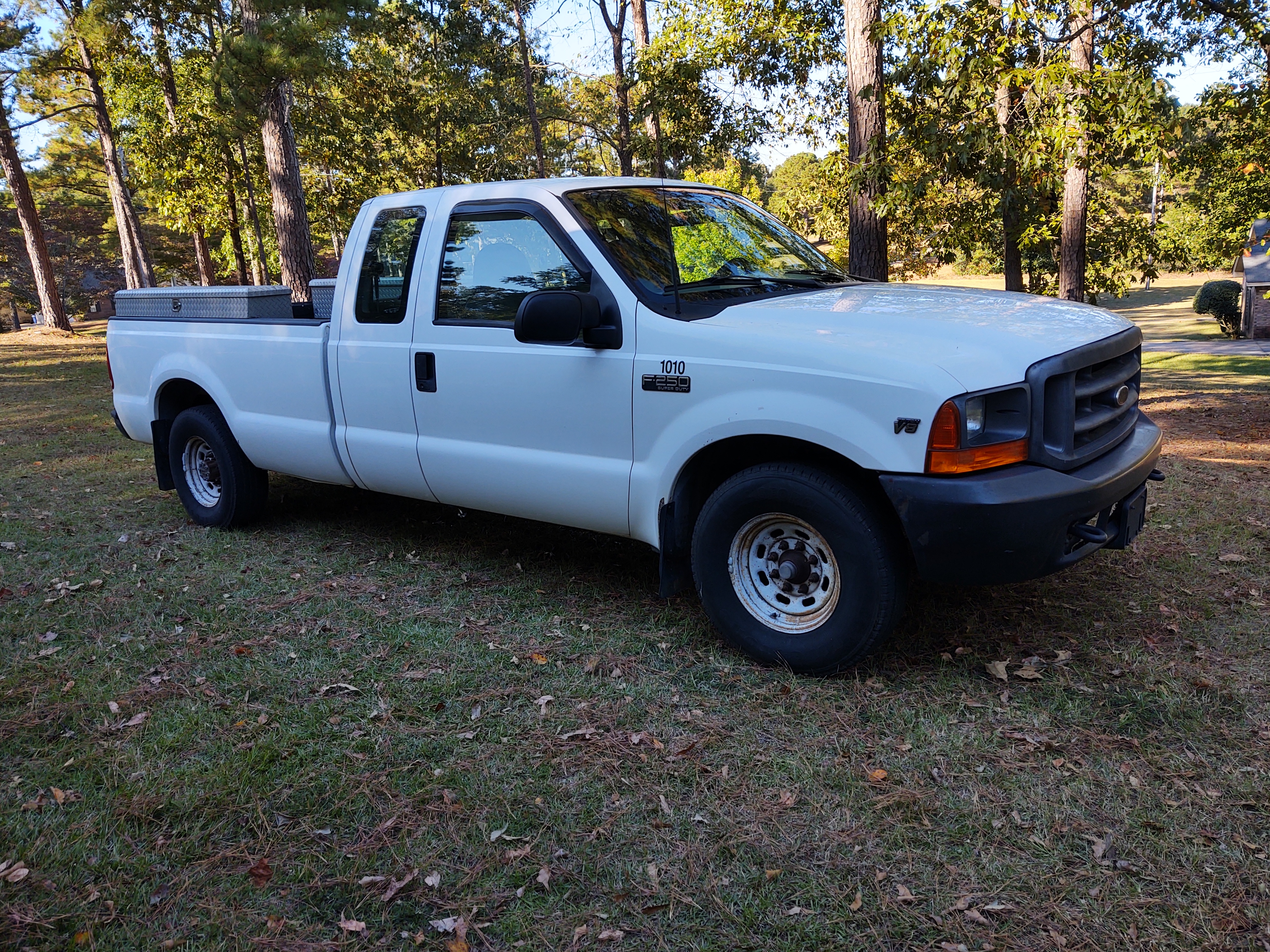
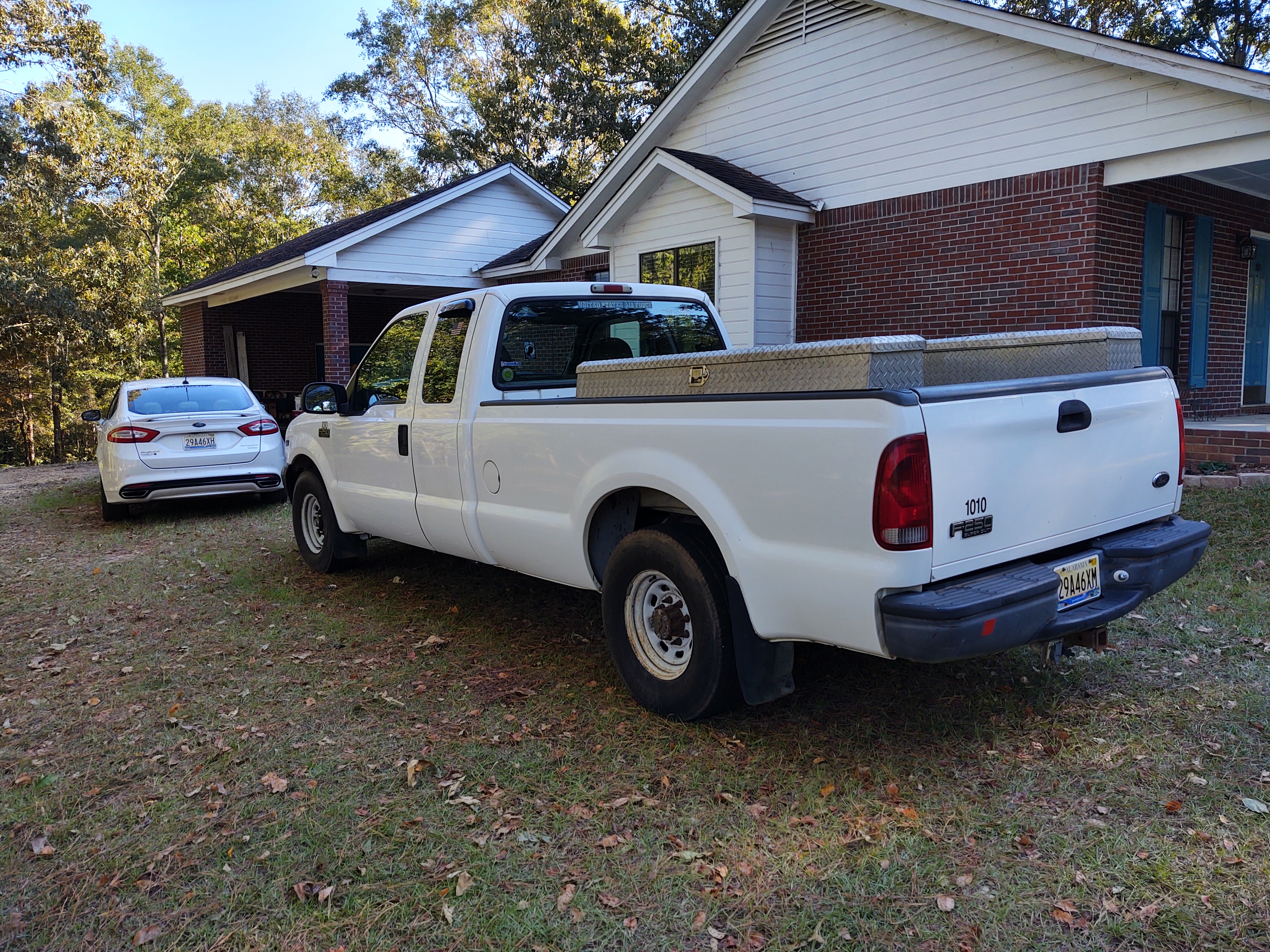
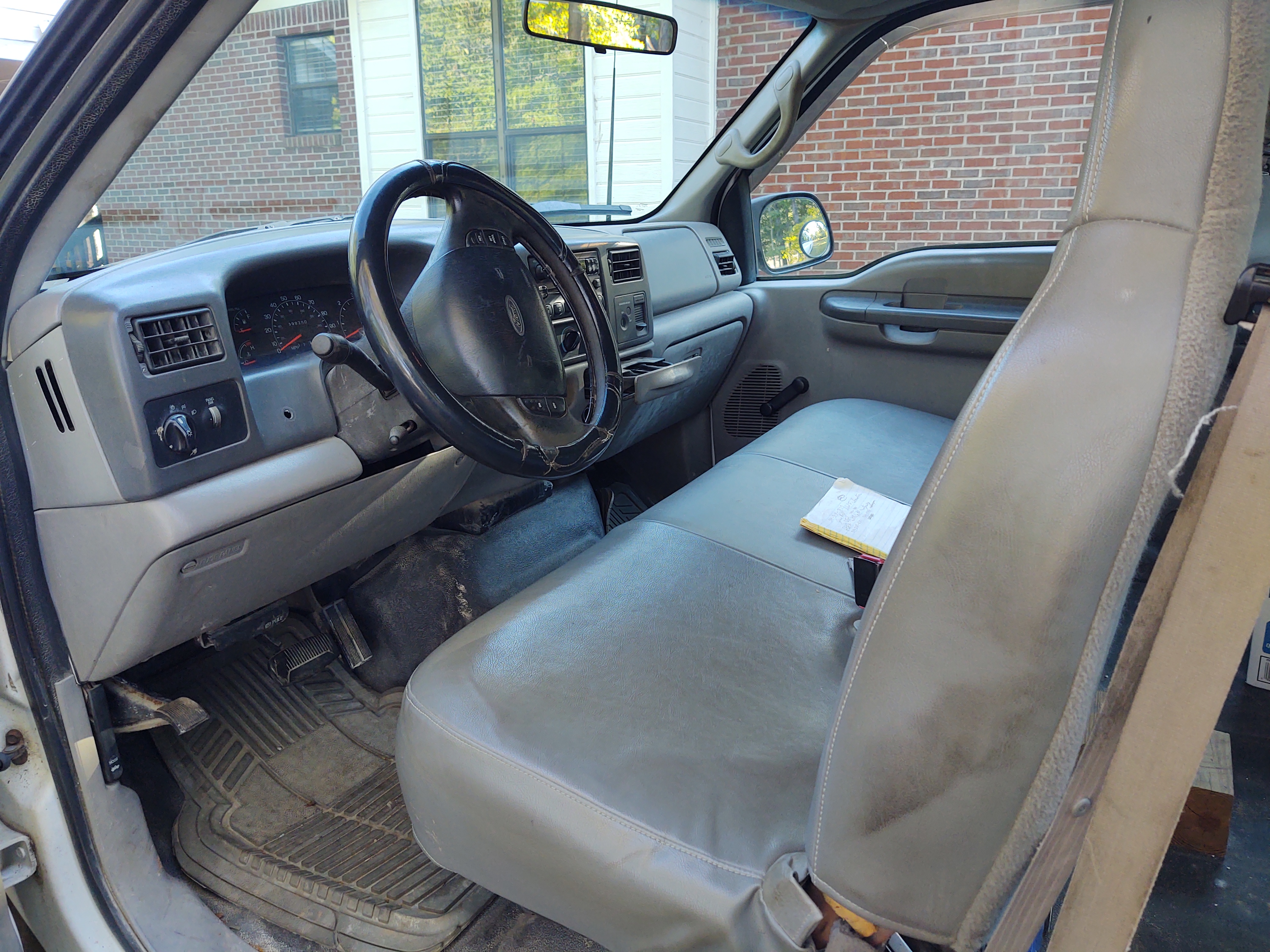
I bought a 2000 F-250 Supercab long bed 5.4 automatic (with 394,000 miles) to tow my car trailer in 2019 from a former employer; looks like a new contractor truck but it has 400,500 miles on it now.
In 2005 (maybe the date escaped me) when we were living in North Carolina Lynda developed asthma. She linked her worst outbreaks to the hair spray I was using for my comb over. We tried several different hair sprays with no improvement in her ability to breathe after I combed my hair. She didn’t complain just avoided me when did my hair. I was very concerned - my wife had a breathing problem that I needed to fix. One of the members of our truck club came by for some help with a carburetor. Looking at him I found the solution to my hsaor problem. After he left, I told Lynda that I had an errand to do in Sanford (the nearest town about 10 miles to the northwest) and I’d be back in about an hour or so. I went to the barber and got a quarter inch buzz cut. Lynda was surprised; I think I should have done it years before. Problem solved, and all of my hair spray went in the garbage.
The rest of the story: In 1987 LeAnn graduated from high school and came to live with us in Hemet, where my brother, Bill, lived also. He had a ski boat and his wife – Linda, my wife and I, LeAnn and his two youngest (my nephews) Danny -13 and Dustin -10 went water skiing at Lake Perris. We all used lots of sun block as none of us went skiing regularly. In the early afternoon LeAnn told me I needed to put some sun block on the bald spot on the back of my head and wear a hat. It was too late my head was on fire. I didn’t know I had a bald spot; Lynda never mentioned it. I knew I had receding hair line, but the bald spot was news to me. I was miserable for several days.
Triva: I’m Robert V. My dad was Robert V. My son is Robert D. Lynda is my wife. Linda is Bill’s wife. My wife has a sister, Jamye, married to Bill Ritzel thus both of my Lynda’s brother-in-laws were Bill. The Ritzels had a son Bill. At Christmas in 1988 we all got together at my house. (My Dad passed away on December 20th so he wasn’t there.) The confusion over names was “entertaining”. It didn’t help that the names of my brother Bill’s sons all started with a “D” - Don, Darren, Danniel and Dustin. The Ritzel’s also have a daughter Karen.
A related story: My brother Bill was killed by a drunk driver in September of 1988. In the summer of 1989 I was working as an independent computer consultant which allowed me to set my work schedule. The oldest nephew, Don, was working and Darren was in the Marines. The two younger nephews were used to their older brothers going water skiing at Lake Perris at least two mornings a week during the summer. They would take different neighborhood girls and get back in time for a late lunch. Their mother asked if I could do that using their truck and boat. It turned out well (because I always wore a hat - lol). We never had to wait to get the boat in the water. Most mornings the there was no wind and the lake was like glas for really great skiing. I showed my nephews how to do the boat maintenance so all I had to do was check things and drive the truck and boat. My Lynda worked at March AFB which is 10.5 miles and 16 minutes from Bernasconi Beach, Lake Perris. She would often join us at the Lake and go water skiing on her lunch hour. She often got a full thirty minutes on the skis. One evening she when she got home, she told me that a couple of the Sergeants in her office followed her to the lake that day. A few minutes after she got back, the Colonel she worked for asked her to come to the break room. The two Sergeants apologized to her; they had been curious about were she disappeared to during recent lunch times and had followed her. When they got back, they told several people that she was water skiing and not anything “more interesting”. (She had previously asked him if going water skiing would be a problem. He said many people combine lunch with running or hand ball, etc, so he didn’t have a problem if she did that.) He was upset with them for stalking her or thinking she was sneaking away for a “nooner”. She thought that was funny. Most people were envious.